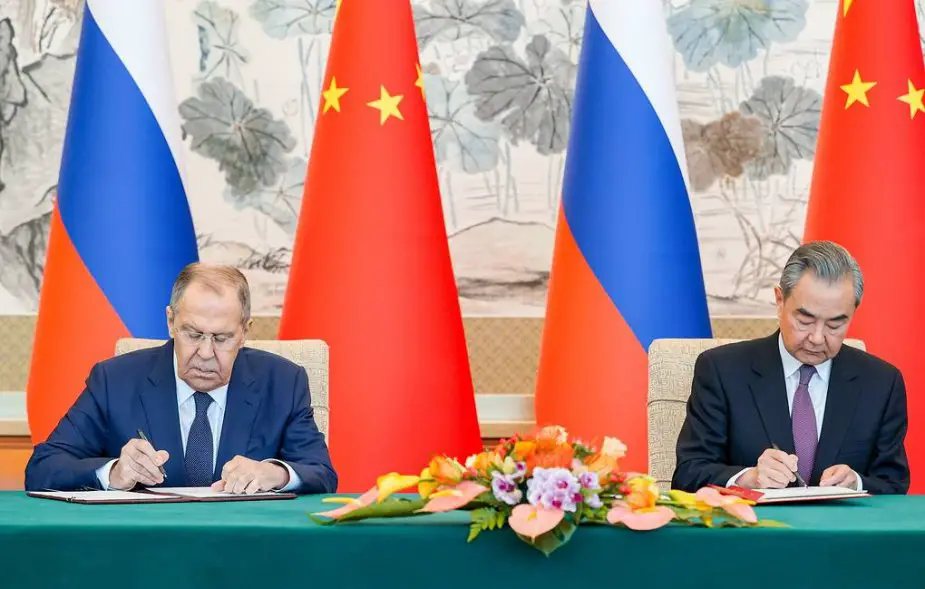According to information published by Российская газета on April 21, 2024, the Russian and Chinese navies have entered into an agreement to cooperate on maritime search and rescue efforts.
Follow Navy Recognition on Google News at this link
 Serguei Lavrov and Wang Yi. (Picture source: Russian MFA)
Serguei Lavrov and Wang Yi. (Picture source: Russian MFA)
Since the mid-2010s, there has been a notable increase in joint military exercises between the two nations. These exercises have grown not only in frequency but also in complexity, showcasing advancements in operational coordination.
They include comprehensive drills such as anti-submarine, anti-ship, and air defense exercises. Such joint operations are not just demonstrations of military prowess but also act as symbolic gestures of solidarity against perceived common threats, particularly from the United States and its allies.
For instance, exercises have involved complex operations such as tactical maneuvering and live firing drills, often incorporating advanced naval assets like missile cruisers, destroyers, and corvettes from both navies. A notable aspect of these exercises is their geographical scope, which includes critical areas such as the Sea of Japan, the East China Sea, and even as far as the Gulf of Oman, underlining the strategic reach and ambitions of both navies.
Additionally, the inclusion of other countries like Iran in some of these exercises, such as the drills conducted in the Gulf of Oman. Recent joint patrols have also taken place in significant international waters such as near the Aleutian Islands off Alaska.
Military-technical cooperation (MTC) between China and Russia is another crucial aspect of their partnership. This collaboration has evolved from straightforward arms sales to more integrated joint projects and technology transfers. This shift suggests a deeper level of defense industry integration, where both nations benefit from each other's capabilities.
China has acquired significant military assets from Russia, such as advanced fighter aircraft and missile systems, which have enhanced its military stature in the Indo-Pacific region. Conversely, Russia benefits from China's market for its military goods, which is crucial especially given the Western sanctions limiting Russia's access to certain technologies.
Despite these strong ties, there are inherent limitations to the depth of their military cooperation. Unlike alliances seen in the West, which might include integrated military command centers and shared defense policies, China and Russia have maintained a more cautious approach. Their cooperation tends to be situational, focusing on specific exercises or technological exchanges rather than permanent joint military structures or deep, policy-level integration.
The geopolitical implications of this partnership are significant. The collaboration is partly driven by mutual concerns over U.S. influence and power in international affairs, aligning both countries against what they perceive as a threat to their regional interests and security paradigms. The ongoing situation in Ukraine and tensions in the Indo-Pacific further catalyze their military cooperation as both nations seek to assert their influence and secure their interests against Western pressures.



